Heart cancer surgery
Heart cancer is a very rare cancer that accounts for less than 1% of the total number of malignant neoplasms. Most heart tumors are benign tumors. This is due to the high speed of blood flow and metabolic processes in tissues. The tissue of the heart muscle is connective, while the neoplasm attacks mainly the epithelium. Also, in adulthood, heart cells (cardiomyocytes) hardly divide, which means that the possibilities for "transforming DNA" into the DNA of a cancer cell are limited. Most often, malignant cardiac tumors are metastases of lung cancer. Other common causes of cardiac metastases are breast and kidney cancer, melanoma, and lymphoma of the breast or other organs. Primary heart cancer occurs 30 times less often. Tumors arise in the myocardium or endocardium; they can also occur in the tissues of the valves, the connective tissue of the heart, or the pericardium. Such tumors are referred to as mesotheliomas, lymphomas, or sarcomas. The survival rate for malignant heart tumors without proper treatment does not exceed 1 year.
Despite the rarity of the disease and its often aggressive course, at present, cardiologists and oncologists do not have a question about whether heart cancer can be treated. Once diagnosed, doctors develop a strategy, assess risks, and decide how to treat heart cancer.
How to treat heart cancer
Current treatments for heart cancer include surgery, chemotherapy, and radiotherapy. The possibility of using biological, hormonal, and targeted drugs depends on the histological type of tumor. Symptomatic therapy aimed at compensating for signs of heart failure, prevention of thromboembolic complications, and pain syndrome is also of great importance in the treatment of cancer.
The gold standard for treatment of a primary heart tumor, if it is localized in the pericardial region and has not spread to muscle tissue, is its surgical removal. Surgery improves survival and prevents relapse.
Surgery for heart cancer is considered a rather complex manipulation. During the operation for many hours, the patient is transferred to artificial circulation, which performs its functions.
How is heart cancer surgery performed?
- sternotomy;
- thoracotomy;
- minimally invasive intervention.
A sternotomy is performed on an open heart. It implies radical excision of pericardial mesothelioma or lymphoma, if localized, with a small invasion of healthy tissue. In the diffuse form, total pericardiectomy is indicated - removal of the pericardium. Sternotomy involves a longitudinal dissection of the sternum. Thus, the surgeon provides access to the heart muscle and the tumor.
If the tumor is located at the back of the heart, a thoracotomy (lateral opening of the chest) is done. The surgeon eliminates the formation with the capture of adjacent tissues and sutures the area of the defect. If necessary, plastic surgery of the operated area or valve replacement is done.
To minimize surgical trauma, removal of small tumors is performed in a minimally invasive way using robotic surgical units, which are characterized by high accuracy and a minimum of complications. The technology is widely used in the treatment of valvular and coronary artery disease.
After any method of surgical intervention, one or two drains are installed in the chest cavity to drain blood, fluid, and air that accumulate in the pleural cavity after the operation. They are usually removed after a few days.
The duration of the operation depends on the complexity of the location of cancer and can last up to several hours. The postoperative period depends on the method of surgery. Usually, the duration of a hospital stay does not take more than 7 days.
When metastases are detected, surgical intervention is ineffective, except for palliative care.
The cost of surgery in Ukraine
The cost of the operation is individual in each case and depends on the level of complexity of the pathology and the chosen technique. The cost of an operation to remove each type of heart cancer is different. Therefore, to clarify the final amount of treatment, the patient must undergo an initial examination. The price of surgery in the Dobrobut clinic in Kyiv also includes preoperative preparation, the procedure and consumables, and the patient's stay in the clinic.
Removal of single tumors is usually accompanied by positive results. The three-year survival rate is 95%. After that, the patient is monitored by a cardiologist and constantly undergoes echocardiographic examination.
How to make an appointment at the Dobrobut MC?
Bibliography
- Книшов Г.В., Витовский Р.М., Захарова В.П. (2005) Опухоли сердца, проблемы диагностики и хирургического лечения. Киев, 256 с.
- Коваленко В.Н., Несукай Е.Г. (2001) Некоронарогенные болезни сердца. Практ. руководство, Морион, Киев, 480 с.
- Цукерман Г.И., Малашенков А.И., Кавсадзе В.Э. Опухоли сердца. М.: Издательство НЦССХ им. А.Н. Бакулева РАМН, 1999. – 268 с
- Burke A.P., Tazelaar H., Gomez Roman J.J. et al. (2004) Benign tumors of pluripotent mesenchyme. In: Travis W. (Ed.) Tumours of the lung, thymus, pleura and heart. Springer-Verlag, Lyon, p. 260–265.
- Burke A.P., Veinot J., Loire R. et al. (2004) Tumors of the heart: introduction. In: Travis W. (Ed.) Tumours of the lung, thymus, pleura and heart. Springer-Verlag, Lyon, p. 251–253.
- Orlandi A., Ferlosio A., Angeloni C. et al. (2005) Cardiac tumours. Pathologica, 97: 115–123.
Our advantages
Our services
ISO certificates
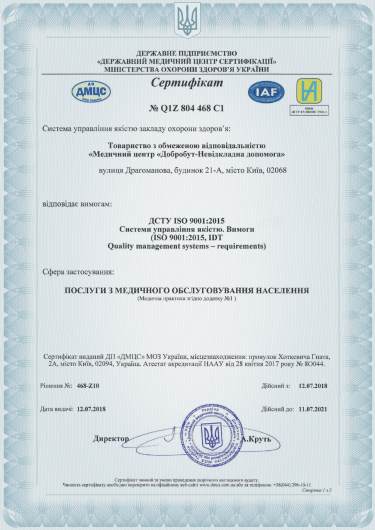
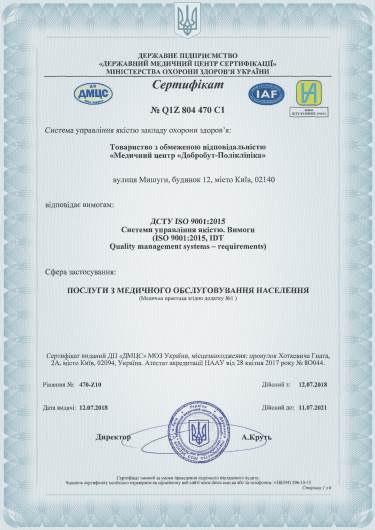
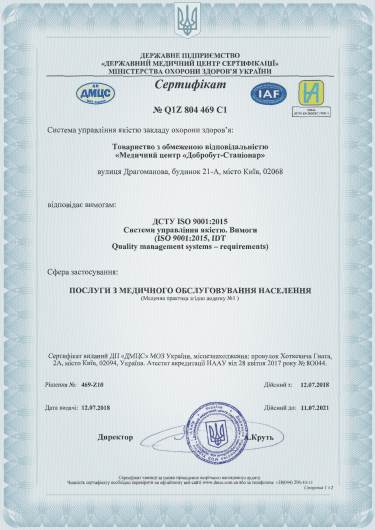
Accreditation certificates
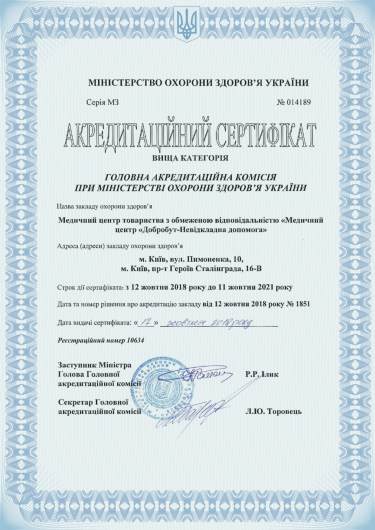
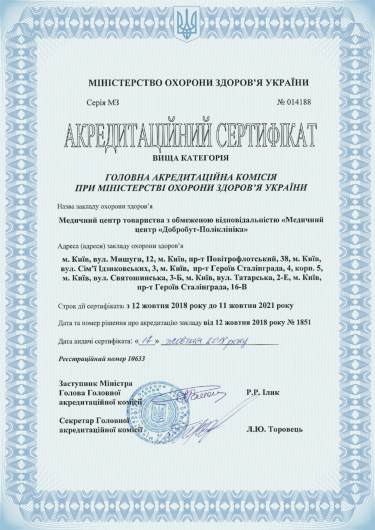

Licenses of medical practice
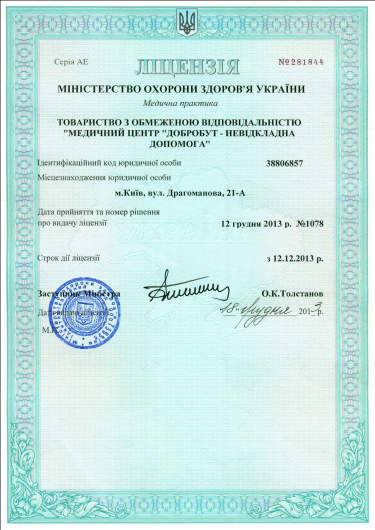
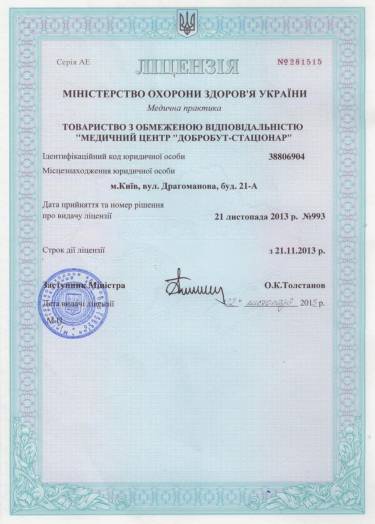

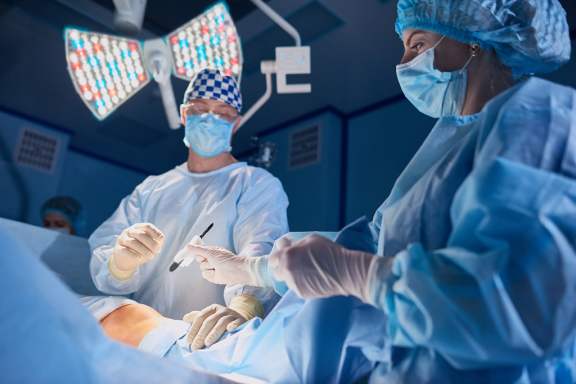

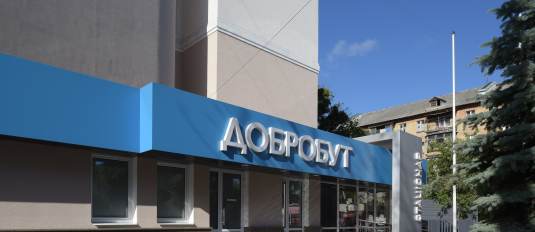
@2x.png)
@2x.png)
%402x.png)
%402x.png)
